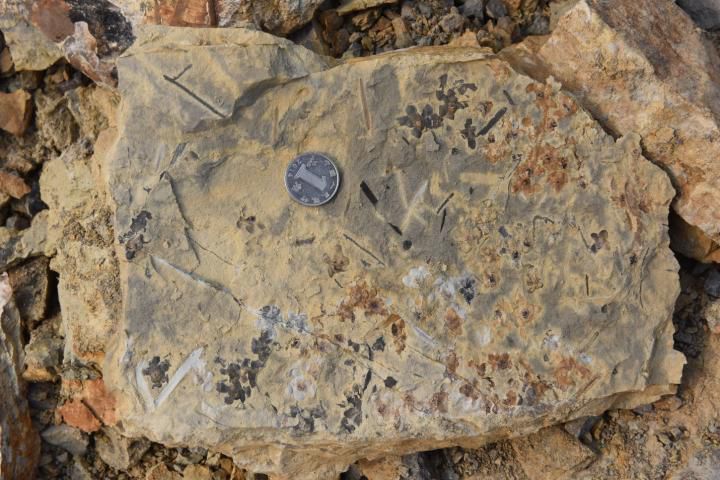@WFS,World Fossil Society,Riffin T Sajeev,Russel T Sajeev
We may recognize our world by its flowering plants and trees, but evolutionarily speaking angiosperms are the new kids on the block, coming after epochs when giant fungus ruled the Earth and nonflowering trees, including cycads and conifers, fed dinosaurs.
A controversial study is now suggesting that flowering plants aren’t quite as newfangled as we thought. As Laura Geggel at LiveScience reports, fossils found in the South Xiangshan Formation in China’s Nanjing region could be evidence that the first species of angiosperm blossomed some 174 million years ago—that’s 50 million years earlier than when most flowering plant fossil material begins to show up.
“The origin of angiosperms has long been an academic headache for many botanists,” says co-author Wang Xin of Nanjing Institute of Geology and Paleontology of the Chinese Academy of Sciences (NIGPAS), in a press release. “Our discovery has moved the botany field forward and will allow a better understanding of angiosperms.”
Researchers examined 264 specimens of 198 individual flowers, preserved in 34 rock slabs from the region, for the paper, published in the journal eLife. Because there were so many samples available, the researchers could dissect some of the ancient plants and look at them using high-powered microscopy. The study details features of the specimens, including what they believe to be ovules, or seeds before pollination, a feature that would confirm the fossils as angiosperms.
If they are ovules, it would be a big deal. Evidence currently places the emergence of flowering plants during the Lower Cretaceous period, about 125 million years ago, when angiosperms seemed to spring up out of nowhere before taking over the Earth in a 30 million-year rampage. There is some evidence of an early history of angiosperms we have missed, a discrepancy that could be resolved by the study’s findings. However, paleobotanists are skeptical of the study’s claims.
Patrick Herendeen, senior director of systematics and evolutionary biology at the Chicago Botanic Garden, tells Smithsonian.com in an email that the photographs included in the study are by no means conclusive. Dismissing the findings as “a load of rubbish,” he says that the photographs of the fossils can be interpreted differently than they have been in the paper. “The fossils are possibly conifer remains but I have not seen any more than the photographs in the plates,” he writes.
Claims of ancient angiosperms require extraordinary evidence. Flowers are particularly fragile and don’t show up well in the fossil record, and other objects can easily be misinterpreted as flower parts. Back in 2015, NIGPAS researchers revealed what they believed to be a 162 million-year-old angiosperm, but other experts weren’t convinced by those fossils, either, explains Becky Oskin at LiveScience, as the sample had been documented more than 40 years prior by a self-taught fossil expert.
Paleobotanists are particularly careful when it comes to the history of flowers since, back in 2002, a specimen made a splash when it was dated up to 144 years old but turned out to be 20 million years younger than that.
If these fossils are, indeed, what the study’s authors are claiming, it raises the question of whether the species—which the researchers have named Nanjinganthus dendrostyla—is an ancient ancestor of all the flowering plants we have today or an evolutionary dead-end, meaning that its line didn’t persist onward. That would give us a foothold into answering whether flowering plants are monophyletic, meaning they all descended from one common ancestor, or whether they are polyphyletic, meaning they came from a variety of ancestral groups.
Source: Article By Jason Daley, SMITHSONIANMAG.COM
@WFS,World Fossil Society,Riffin T Sajeev,Russel T Sajeev



 June 23rd, 2021
June 23rd, 2021  Riffin
Riffin 
 Posted in
Posted in  Tags:
Tags: 